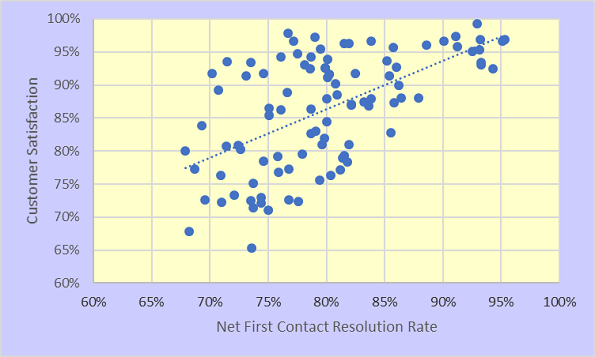Chapter 7: Pilot & Iterative Improvement
JJ and his team launch their first AI-powered chatbot for customer service on day 35 of their 90-day challenge. They implement a data-driven, iterative approach to continuously improve performance.
After many days of long standing meetings, JJ stood in front of the team, a mix of excitement and tension palpable in the air. It was day 35 of their 90-day challenge, and they were about to launch their first AI-powered initiative as a small pilot: an enhanced chatbot for customer service.
"Alright, team," JJ began, his voice steady despite the butterflies in his stomach. "Today's the day we start our iterative improvement process. Remember, we're not aiming for perfection out of the gate. We're going to learn, adapt, and improve continuously."
Maya, the head of Customer Success, nodded nervously. "The team's ready, JJ. We've trained them on the new workflow and how to provide feedback on the AI's responses."
JJ smiled encouragingly. "Great work, Maya. Now, let's review our key metrics one more time." He turned to the whiteboard and wrote:
- Response Accuracy -
- Customer Satisfaction Score (CSAT)
- Average Handle Time (AHT)
- First Contact Resolution (FCR)
- AI Confidence Score
"Sarah," JJ called out to the data analyst, "you've set up real-time tracking for these metrics, right?"
Sarah nodded, pulling up a dashboard on the main screen. "Yes, we'll be able to monitor these in real-time and generate daily reports."
JJ turned to Alex from IT. "And our prompt engineering interface is ready?"
Alex gave a thumbs up. "Ready to go. The team can easily tweak prompts based on the AI's performance."
"Excellent," JJ said, taking a deep breath. "Let's do this."
With a nod from JJ, Alex hit the switch, and their AI-enhanced chatbot went live. The first few hours were tense, with the team huddled around Sarah's dashboard, watching the metrics fluctuate. There were moments of triumph—like when the AI correctly handled a complex query about international wire transfers—and moments of frustration, like when it struggled with a simple account balance inquiry.
"This is normal," JJ reassured the team. "We're going to iterate and improve."
Over the next few days, the team fell into a rhythm. Each morning, they'd review the previous day's performance, identify areas for improvement, and make targeted adjustments to the AI's prompts and training data. By the end of the first week, they were seeing promising trends:
- Response Accuracy had improved from 72% to 81%
- CSAT scores were up by 5 points
- AHT had decreased by 15%
- FCR had improved from 65% to 73%
"Great progress, team," JJ said during their weekly review meeting. "But let's not get complacent. What are we missing? Where can we improve further?"
Maya raised her hand. "I've noticed the AI struggles with context in longer conversations. It sometimes forgets details mentioned earlier in the chat."
JJ nodded, jotting down notes. "Good catch, Maya. Alex, can we adjust the context window or implement some form of memory mechanism?"
Alex scratched his chin thoughtfully. "We could look into implementing a retrieval-augmented generation approach. It might help with maintaining context over longer interactions."
"Do it," JJ said. "Sarah, work with Alex to measure the impact of this change once it's implemented."
As the meeting wrapped up, JJ felt a sense of cautious optimism. They were making tangible progress, and the iterative approach was paying off. He turned to the whiteboard and added a new note: "Day 42 of 90: First week of AI chatbot complete. Metrics improving. Next steps: Iterate with Model finetuning and improved context handling. Battle half won - Do not forget to lead up as well."
The journey was far from over, but JJ could see the transformation taking shape. FinTechNova was evolving, one iteration at a time. He won over skeptics from the department. The bigger challenge is to get continous buy-in from a very impatient leadership team.
TLDR: Chapter 7 Summary
Chapter 7 - Pilot and Iterative Improvement. Go with small incremental wins.
JJ and his team launch their first AI-powered chatbot for customer service on day 35 of their 90-day challenge. They implement a data-driven, iterative approach to continuously improve the AI's performance. Key metrics like response accuracy, customer satisfaction, and handle time show significant improvements within the first week. The team identifies challenges, such as the AI's struggle with context in longer conversations, and plans to implement retrieval-augmented generation (RAG) to address this issue. JJ emphasizes the importance of continuous learning and adaptation, setting the stage for FinTechNova's ongoing AI evolution.
Glossary for Chapter 7: Pilot and Iterative Improvement
Response Accuracy
The percentage of AI-generated responses that are correct and appropriate for the given customer query.
Customer Satisfaction Score (CSAT)
A measure of how satisfied customers are with the service or interaction they received, typically rated on a scale.
Average Handle Time (AHT)
The average duration of a customer interaction from start to finish, including hold time, talk time, and after-call work.
First Contact Resolution (FCR)
The percentage of customer issues or queries that are resolved during the initial contact, without requiring follow-up interactions.
AI Confidence Score
A measure of how certain the AI system is about the accuracy and appropriateness of its generated response or decision.
Prompt Engineering
The process of designing and refining input prompts to optimize an AI model's output and performance.
Retrieval-Augmented Generation (RAG)
A technique that enhances AI models by allowing them to access and incorporate external knowledge sources when generating responses.





